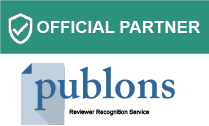Abstract
Background: Cardiovascular fitness, measured through Resting Heart Rate (RHR) and Maximal Oxygen Uptake (VO2 Max), is critical for optimizing athletic performance. High-Intensity Interval Training (HIIT) and Fast Continuous Training (FCT) are two aerobic conditioning modalities widely used to improve cardiovascular efficiency, but their comparative effects remain insufficiently studied in adult competitive athletes. Aim: This study aimed to compare the effects of an 8-week HIIT and FCT program on RHR and VO2 Max in adult athletes, thereby evaluating the efficacy of each training modality in enhancing aerobic performance. Methods: A randomized controlled trial design was employed involving 90 adult athletes (45 males and 45 females, aged 21-26), randomly located into three groups: HIIT (n=30), FCT (n=30), and Control (n=30). RHR and VO2 Max were assessed during pre- and post-intervention using Polar H10 monitors and Vmax Encore Metabolic Cart, respectively. Data were analysed using ANCOVA (Analysis of Covariance) to control for pre-test differences, followed by Tukey’s post-hoc comparison. Results: Post-intervention results revealed statistically significant improvements in both RHR and VO2 Max across the training groups (p < 0.05). The HIIT group exhibited the most significant reduction in RHR (62.72 bpm) and the highest increase in VO2 Max (52.12 ml/kg/min), outperforming both FCT (RHR = 65.06 bpm; VO2 Max = 49.40 ml/kg/min) and the Control group (RHR = 70.32 bpm; VO2 Max = 41.28 ml/kg/min). Effect sizes were large for both RHR (η² = 0.950) and VO2 Max (η² = 0.982), indicating robust model fit. Conclusion: The findings confirm that both HIIT and FCT are effective in improving cardiovascular parameters among adult athletes, with HIIT demonstrating superior efficacy in a shorter duration. These results support the strategic incorporation of HIIT in training regimens aimed at maximizing aerobic performance and cardiovascular health.
Keywords
Fast Continuous Training, High-Intensity Interval Training, Resting Heart Rate, Maximal Oxygen Uptake (VO2 Max), Sports Physiology, Adult Competitive Athletes, Aerobic Endurance,References
- Atakan, M.M., Güzel, Y., Bulut, S., Koşar, Ş.N., McConell, G.K., Turnagöl, H.H., (2021). Six High-Intensity Interval Training Sessions over 5 Days Increases Maximal Oxygen Uptake, Endurance Capacity, and Sub-Maximal Exercise Fat Oxidation as Much as 6 High-Intensity Interval Training Sessions over 2 Weeks. Journal of Sport and Health Science 10 (4), 478–87.
- Bassett, D.R., Howley, E.T., (2000). Limiting Factors for Maximum Oxygen Uptake and Determinants of Endurance Performance. Medicine and Science in Sports and Exercise, 32 (1), 70–84.
- Borresen, J., Lambert, M.I. (2008). Autonomic Control of Heart Rate during and after Exercise: Measurements and Implications for Monitoring Training Status. Sports Medicine, 38 (8), 633– 46.
- Buchheit, M., Laursen, P.B. (2013). High-Intensity Interval Training, Solutions to the Programming Puzzle: Part I: Cardiopulmonary Emphasis. Sports Medicine, 43 (5), 313–38.
- Daussin, F.N., Ponsot, E., Dufour, S.P., Lonsdorfer-Wolf, E., Doutreleau, S., Geny, B., Piquard, F., Ruddy R., (2007). Improvement of VO2max by Cardiac Output and Oxygen Extraction Adaptation during Intermittent versus Continuous Endurance Training. European Journal of Applied Physiology, 101 (3), 377–83.
- Daussin, F.N., Zoll, J., Dufour, S.P., Ponsot, E., Lonsdorfer-Wolf, E., Doutreleau, S., Mettauer, B., Piquard, F., Geny, B., Richard, R. (2008). Effect of Interval versus Continuous Training on Cardiorespiratory and Mitochondrial Functions: Relationship to Aerobic Performance Improvements in Sedentary Subjects. American Journal of Physiology - Regulatory Integrative and Comparative Physiology, 295 (1), 264–72.
- Gibala, M.J., Little, J.P., Macdonald, M.J., Hawley, J.A., (2012). Physiological Adaptations to Low-Volume, High-Intensity Interval Training in Health and Disease. Journal of Physiology, 590 (5), 1077–84.
- Midgley, A.W., McNaughton, L.R., Wilkinson, M. (2006). Is There an Optimal Training Intensity for Enhancing the Maximal Oxygen Uptake of Distance Runners? Empirical Research Findings, Current Opinions, Physiological Rationale and Practical Recommendations. Sports Medicine, 36 (2), 117–32.
- Seals, D.R., Reiling, M.J. (1991). Effect of Regular Exercise on 24-Hour Arterial Pressure in Older Hypertensive Humans. Hypertension, 18(5), 583–92.
- Seiler, K.S., Kjerland, G.O. (2006). Quantifying Training Intensity Distribution in Elite Endurance Athletes: Is There Evidence for an ‘Optimal’ Distribution?. Scandinavian Journal of Medicine and Science in Sports, 16(1), 49–56.
 |
|


 Articles
Articles

